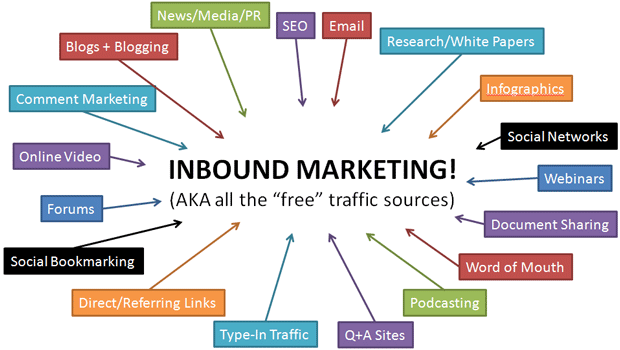Attracting new clients almost always means employing different marketing strategies. Do you happen to know which ones are the most effective for your business? Have you ever heard of the term ‘Inbound Marketing? ‘
In a recent survey done by a website for entrepreneurs, it reveals that almost half of their members find that getting new customers is their business’ biggest obstacle. In order to address that challenge, most businesses turn to more traditional marketing strategies like print ads, telemarketing, mail, and even advertising on air. As a customer I’m sure these practices would remind you of the countless times you’ve thrown print ads straight to the bin, hung up on a telemarketer, or got impatient at commercials because they interrupt your favorite shows.
As a business, do you have back-up plans on what to replace these tactics with? It seems like that most customers are already sick and tired of the traditional marketing approaches that we’ve been implementing for the past decades. Without any marketing, I’m sure that you will feel that you have no legs to stand on, and of course will cause your business suffer. I’d like to suggest that maybe you can move on from these old-school marketing activities and adapt a much more effective process called ‘inbound marketing.’
What is Inbound Marketing?
Compared to the traditional marketing ploys that we just discussed, ‘inbound marketing’ pulls your targeted customers toward you. As compared to the traditional methods where we ‘push’ our products and services to potential customers, ‘inbound marketing’ finds ways on how to attract your target niche. This means that instead of you exerting all the effort, you just need to lay something out there and your customers will come.
Inbound marketing is predominantly uses the Internet in sending out messages through the use of blogs, RSS feeds, and e-books. Moreover, search engine optimization, Youtube videos, and social networking portals like Facebook and Twitter are also used for inbound marketing.
Inbound marketing activities provide a ‘softer sell’ for your products or services. It allows your customers to connect and get in touch with your business first even before they’re offered anything. The result is that your business will be viewed with better integrity and reputation for less cost but more leads.
The Elements of Inbound Marketing
In adapting an inbound marketing technique, you would need to consider three factors. These are content, search engine optimization (SEO), and social media. Content pretty much refers to the advice that you give people whenever they need it. Most people kind of view them as virtual printed advertisements. These can be in the form of a website, a blog, e-books, forums, or email.
SEO is all about ranking your website on the most popular search engines like Google. It is built on the concept that you get more website traffic if your blog or site appears on the first search page when any search is done by your targeted audience. The goal of SEO is to dominate your niche by utilizing keywords and providing relevant content to improve search engine rankings. Once optimization is achieved, you can expect to get more traffic, not only locally, but globally.
The last element of Inbound marketing is the usage of Social Media. Facebook, Twitter, and other networking portals gives you the opportunity to connect with potential and current customers. These are like extensions of your website with pages containing company, product, and contact information.

